White Strawberries : How To Grow and Care
Strawberry is one of our favorite fruits. We almost always conjure up a similar image when we think of strawberries. Because those fruits are delicious, incredibly tasty, extremely flavorful, and a little bit sour due to acidity, and with their plump shape and green leaves, they are an esthetic delight for our eyes. If you think traditionally, when we talk about this fruit, the color red always comes to our minds almost always. However, strawberries have a lot of distinct species.
White strawberries are a type of that family. They are out of the ordinary, look exciting, and taste great. White strawberries are sweeter than red strawberries, contrary to popular belief. There are also white-colored sub-species. When you read this article, you will learn how to grow and care for your fruits. Before we start growing and caring for this plant, we should understand why it is considered a luxury and so rare. Because of its flavor, this fruit is also known as pineberries. Caring is the most important aspect of growing. You will learn everything about caring if you follow the instructions.
Where Did White Strawberries come from?
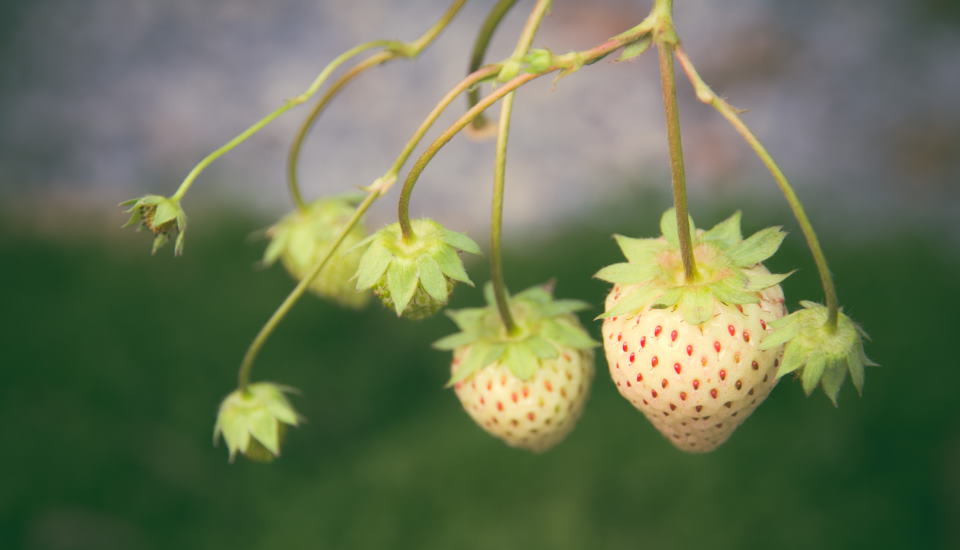
White strawberries are a natural cross-breed species from Japan that took years to develop. The “Jewel Strawberry,” the most well-known species, has been available for consumption since 2012. This fruit’s goal was to have a sweeter flavor, a larger size, be easy to eat, and have a distinct pale color. Strawberry plants are grown all over the world, even though they are thought to be native to America. Strawberries thrive in regions with plenty of sunlight because they are perennial plants.
Why Are White Strawberries White?
Sunlight gives traditional strawberries their color. However, one of this species’ requirements is that sunlight exposure is limited during the growing period. The fruit retains its milky white color in this manner, and almost all of them turn pure white. The pinky color and small spots are maintained throughout.
How do the White Strawberries taste?
These species have a sweeter flavor than their red relatives. Every bite has a distinct sugary flavor. The flavor is also aromatic, thick, and somewhere between tropical and sour. It has a candied flavor that is similar to pineapple. As a result, the fruit is also known as pineberries, a combination of the words pineapple and strawberry.
What do the White Strawberries look and feel like?
White strawberries come in a variety of sizes. It can be both large and small. It is determined by the species. The fruit is oval with a curved body. Touching it feels silky smooth. They are very similar to the traditional red cousins.
Are White Strawberries Nutritious?
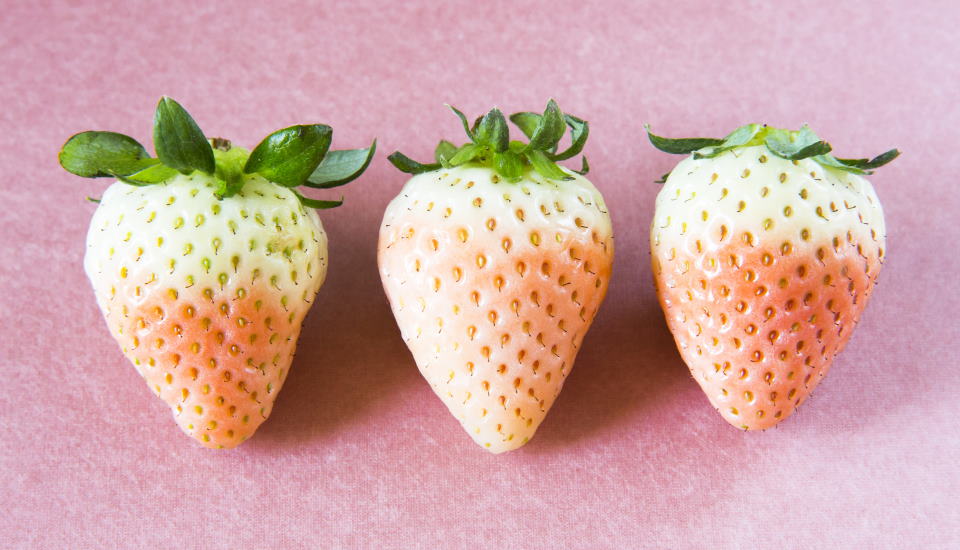
It contains a significant amount of Vitamin C, an antioxidant that protects our bodies from harmful bacteria, inhibits inflammation, and boosts collagen production. The fruit also contains iron, which contributes to the production of the protein hemoglobin, which transports oxygen throughout the body. It also contains calcium for healthy bones and zinc for protection against viruses. Vitamins such as vitamin A, E, K, and magnesium are in short supply.
What are the types of White Strawberries?
There are several types of white strawberries, including alpine strawberries, the most commonly grown white strawberry type. These should not be confused with pineberries.
Varieties of White Strawberries
There are two main species; alpine strawberries and beach strawberries, both wild species. You will find the following varieties among the white alpine strawberry:
- Krem
- Albicarpa
- White Soul
- White Solemancher
- White Giant
- White Delight
- Pineapple Crush
On the other hand, white beach strawberries are also known as coastal strawberries, wild Chilean strawberries, and South American strawberries.
Are White Strawberries allergenic?
Because proteins that tint red strawberries cause many allergies, eating white strawberries should not be a problem because they lack the protein that gives the fruit its distinctive color. However, this theory should be put to the test under medical supervision.
How to grow and care for White Strawberries tips and tricks?
This article will provide you about how to grow and care for your white strawberries with some tips and tricks. You can grow these pinkish-white strawberries that have an acidic aroma in your garden, even in your window seat, easily. They are easy to grow, so do not worry about it.
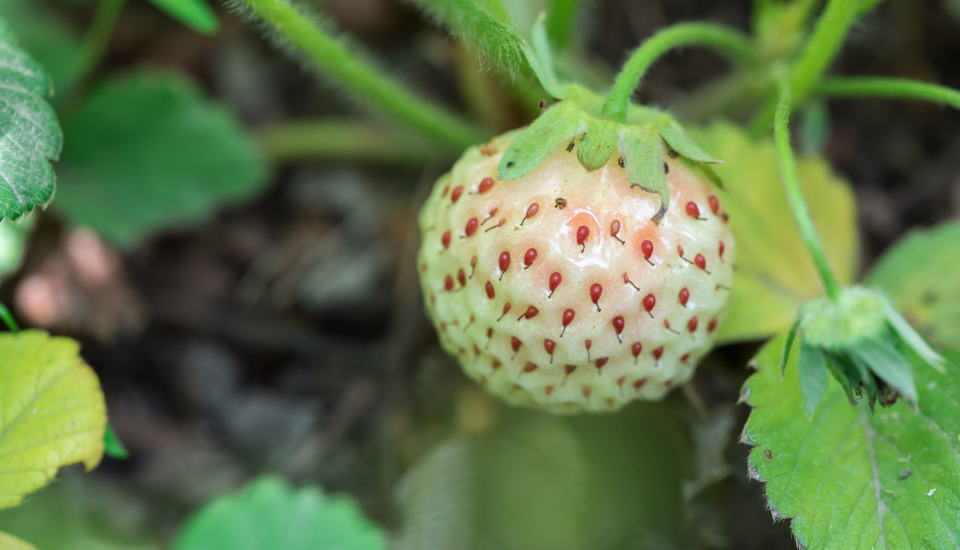
It’s a white strawberry cultivar that looks and grows similarly to conventional red strawberries but with a few key changes. They can be more productive and competitive and produce small to medium-sized white berries instead of red berries. The white strawberries have a slightly zesty flavor that some compare to a cross between strawberry and pineapple, hence the name pineberry (white strawberries).
However, there are a few things you should know before you begin planting them. Both the positive and negative aspects should be considered. Here are some tips for growing pineberries, including where to get them, how to harvest them, and the best uses I’ve found for them in cooking.
Growing this fruit is similar to growing strawberries, so if you’ve done that before, you will have no trouble. Don’t worry if you’ve never grown strawberries before; they’re one of the easiest fruits to cultivate. You can keep propagating new plants from runners after your plants are established. That implies that even if you start with only one fruit plant, you can expect dozens, if not hundreds, more to appear in your garden over time.
White Strawberries Are Grown from Plants Rather Than Seeds
Everyone wanted to cultivate white strawberries when they were introduced, and you couldn’t beg, borrow, or steal them. However, nowadays, they’re considerably easier to come by these days and make a great addition to your berry patch. However, as stated above, you must start with plants rather than seeds if you wish to develop this fruit.
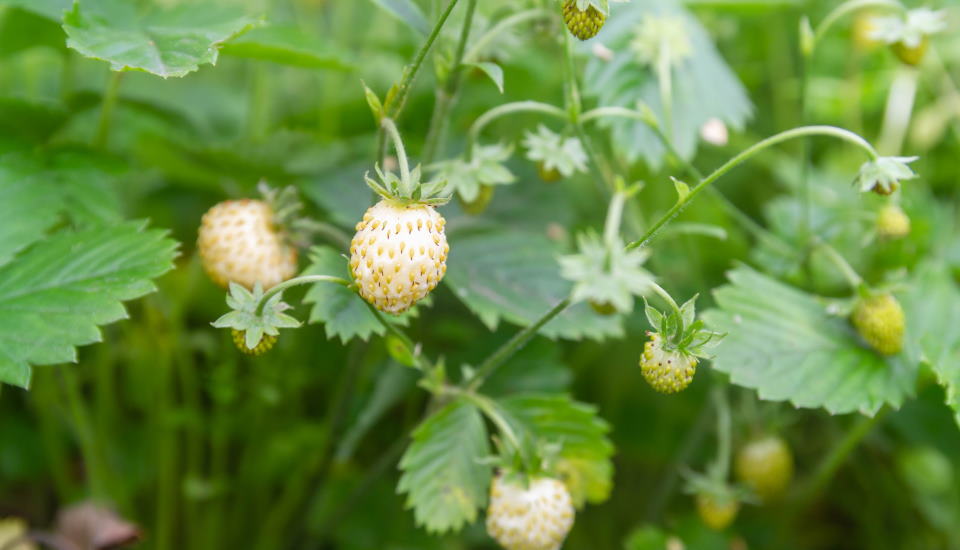
You should avoid buying seeds of this fruit if you see them for sale on the internet or elsewhere. Even if they were picked from real white strawberries, the plants they grow into are unlikely to produce white strawberries. That also means that seeds from white strawberries purchased at farmer’s markets will not sprout into white strawberry plants.
The best way to get white strawberries is to grow them in a polytunnel. However, if you have any friends or someone that does that, you can ask them for roots. They produce a lot of them, so they probably will give you some.
If you don’t know anyone who grows them, you’ll have to order them from a plant nursery. The cheapest way to do this is to order bare-root plants in the winter. If you can’t find them bare-root, they’re also available as potted plants, although they’ll cost a little more. They’re normally sold individually or in groups of five to ten. But you should start with only a couple. You won’t need many because the runners will generate more plants than you’ll ever need.
You Can Also Get White Strawberry Plants
Despite their growing popularity, most garden centers are unlikely to stock plants. You’ll probably have to order them from a specialized nursery or a reliable source that already grows them. Snow White, White Dream, White Carolina, White Pine, White Albino, Wonderful, Natural Albino, and White D are among the many kinds available currently. The first two are more common in Europe, while the others are more common in North America. Without a variety of names, some plants are simply named white strawberries.
It’s also worth noting that there are white alpine strawberry kinds available. These are little wild strawberries that become white when ripe, not pineberries. When ripe, the seeds will be yellow, and the berries will have very little flesh and too many seeds. They are not sweet either. Use trusted providers for getting whiter strawberries.
How do you grow and care for White Strawberries?
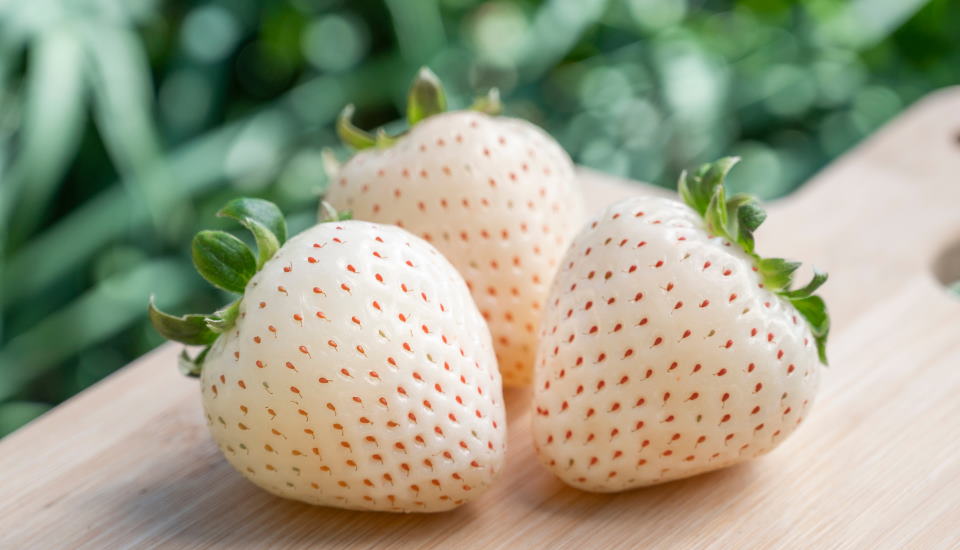
It’s time to plant your plants or bare-root plants once you have them. If the roots appear to be a touch dry, soak them for ten to fifteen minutes before potting or planting them. Potted plants can be planted at any time of year, as long as the ground is not frozen or covered in snow. White Strawberries thrive in both open ground and containers, which is good news for you. In my opinion, they get a little too happy in the garden, so you should pluck every strawberry and pineberry plant from your current strawberry field this winter. That’s because this fruit ate away all of the other strawberry plants, leaving only a few red berries last year.
White Strawberries look very pleasant, so while caring for them, you might want aesthetic pots or planters. Since caring is the key factor for this fruit, looks are also important in some sense.
Here there are some tips and tricks for growing and caring for your fruits:
- They need a sunny location.
- Plant in well-drained soil that has been treated with compost.
- Plant no more than a few inches below the crown.
- Keep your plants hydrated.
- When the berries start to form, mulch with straw.
- Take slug prevention measures.
- Protect the plants from birds by netting them when the berries are forming.
- In the autumn to early spring, give the plants a top coating of composted manure.
Tips for Growing and Caring for the White Strawberry
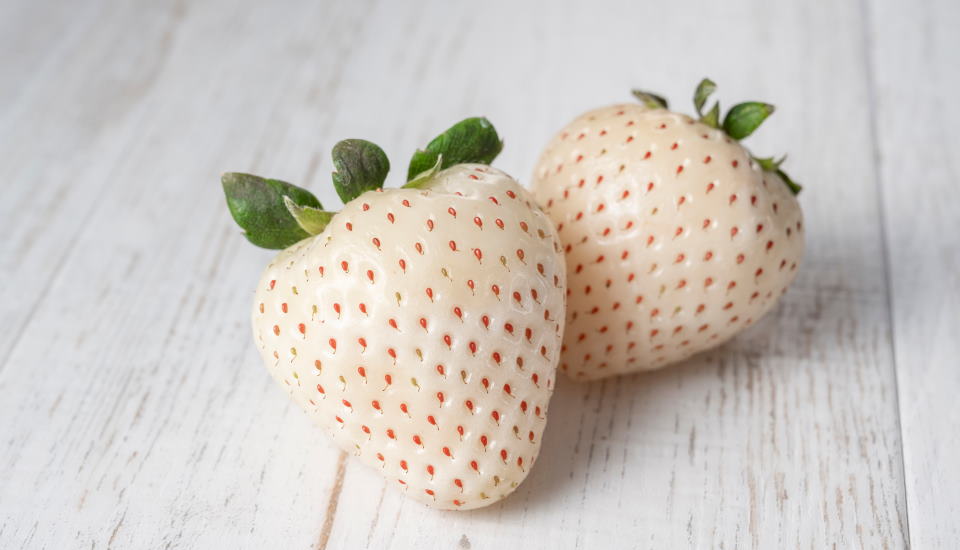
You may have heard that one of the advantages of cultivating these white-skinned berries is that animals won’t eat them because they don’t appear to be ripe. Slugs are a major issue; therefore, this is only partially accurate. Mulching shrubs and removing rotten berries can reduce this problem. Use beer traps, organic slug pellets, or physical slug removal to limit the slug population near your plants.
This fruit sometimes does not produce any yield in its first year. However, contrary, this fruit yields more in later years than its red counterpart.
Because this fruit is an overpowering strawberry kind, they produce a lot of fruit. That implies they can produce berries indefinitely as long as they are exposed to warm (but not scorching) sunlight, receive regular watering, and have insects pollinate the blossoms. It’s alright to eat berries all summer.
When the White Strawberries Ripe?
Even if you care for them enough and correctly, you can not be sure actually. It’s initially difficult to tell when they’re ripe because the berries are white both when unripe and when ripe. The white starts greeny-white and turns creamy white as it ripens. The easiest way to tell when pineapple berries are ripe is to look at the seeds on the berry. The berry is ripe when it turns vivid red.
The flesh is tender to the touch at this time, and the white flesh will become light pink if you keep the berries on the plant long enough in the sun. Caring for them is the most important thing. Because the berries are smaller than strawberries, harvesting them can be a bit more difficult. You should care for them. However, there could be a lot more berries, so the numbers compensate. During peak pineberry season, my patch could easily yield a large mixing bowl full of berries every couple of weeks.
- When the skin turns from green-white to a somewhat creamy white, they’re ready to eat.
- The skin will grow into a light pink blush if left on the plant.
- The plant may not bear berries in the first year.
- Tuck straw or another material under the berries as soon as they form to protect them from slugs and decay.
Now you know almost everything about growing and taking care of this fruit. You can grow your fruits and take care of them. It is easier when you know what to do and what not to do. You can read this article again if you have any questions on your mind. It is also important that care for these fruits is important. Be nice to them. Be patient. And afterward, you will have beautiful, tasty, almost like candy berries.
You may also be interested in:


